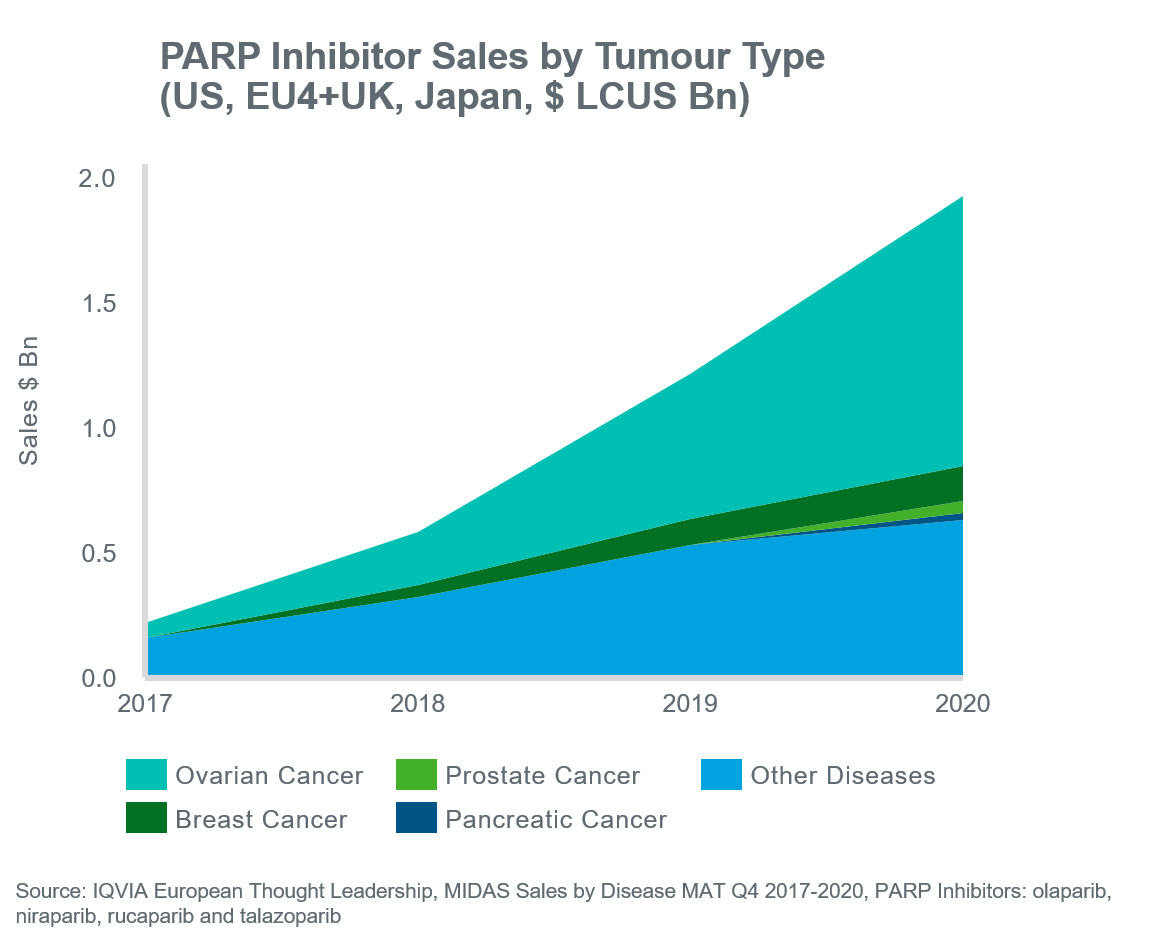
























- Blogs
- MIDAS Sales by Disease Insight Series #5
Genome instability is an enabling characteristic for many cancers and often occurs due to defects in relevant processes during cell division such as faulty DNA repair mechanisms. This results in an increased tendency for DNA alterations leading to cancer progression, something that has been better documented and researched through advances in DNA-sequencing technologies. (1)
PARP is an important protein in the DNA repair pathway – so why inhibit it? Because doing so preferentially kills cancer cells that harbour defects in other parts of their DNA maintenance systems causing genomic instability. So far, PARP Inhibitors have been approved in various BRCA mutation-associated cancers, as this results in a dual deficiency in the DNA repair pathways, leading to greater chance of cell death. (2)
The figure below shows the cancers in which PARP inhibitors have launched and the changing share of sales over time. By the end of 2020, PARP Inhibitors were valued at $1.9 Bn at list price in the 7 developed markets included in our data, having roughly doubled in size every year since the market’s inception. The largest segments for PARP Inhibitors today are in ovarian cancer where this class initially launched followed by breast cancer, both indications led by first-in-class Lynparza (olaparib, AstraZeneca).
Looking ahead, the full potential of PARP Inhibitors is being explored in two important areas as this class continues its growth phase:
- The focus of research has turned to showing efficacy in new indications and investigating novel combinations to combat resistance, where currently over 40% of BRCA1/2 deficient patients do not respond to PARP Inhibitors.(3)
- Advances in genomic sequencing technologies and increased clinical adoption of comprehensive genome profiling kits will likely lead to relevant biomarkers being identified. New biomarkers would allow high-responders to be selected and extend the benefit beyond BRCA1/2 mutations to other cancer types

References
- Hanahan, D., and Weinberg, R.A. (2011). Hallmarks of cancer: the next generation. Cell 144, 646 – 674
- Curr Probl Cancer. 2011 Jan–Feb; 35(1): 7–50.
- https://molecular-cancer.biomedcentral.com/articles/10.1186/s12943-020-01227-0, accessed July 2021
To learn more about IQVIA MIDAS Sales by Disease, Click here.
